Abergavenny, Monmouthshire
Up to 1834
Eden, in his 1797 State of the Poor, records of Abergavenny that:
In 1835, a workhouse was in operation in the town on Mill Street with Richard Cross as its Governor.
In about 1820, Tredegar (then a chapelry in the parish of Bedwellty) erected a workhouse on what became part of Queen Square. The building is now divided into cottages.

Former Tredegar workhouse, 2020.
© Peter Higginbotham.
After 1834
Abergavenny Poor Law Union was formed on 31 May 1836. Its operation was overseen by an elected Board of Guardians, 36 in number, representing its 28 constituent parishes and hamlets as listed below (figures in brackets indicate numbers of Guardians if more than one):
Monmouthshire:
Abergavenny with the hamlets of Hardwicke and Lloyndir (3), Aberystruth (3), Bettwsnewydd, Bryngwyn, Bwlch Trewyn, Clytha, Lower Cwmyoy, Upper Cwmyoy, Ishlawrcoed with Manmoel and Ushlawrcoed (4), Llanarth, Llanellen, Llanfoist, Llangattock-Llingoed, Llangattock-nigh-Usk, Lower and Higher Llanover (2), Llansaintfraed, Llanthewy-Rytherch, Llanthewy-Skirrid, Llantillio Pertholey, Llanvair Kilgidin, Llanvapley, Llanvetherine, Llanvihangel Crucorney with Penbiddle, Llanvihangel-nigh-Usk, Llanwenarth Citra, Llanwenarth Ultra, Oldcastle.
Herefordshire: Fwthog.
The population falling within the Union at the 1831 census had been 30,427 with parishes ranging in size from Llansaintfraed (population 24) to Tredegar's combined parishes of Ishlawrcoed with Manmoel and Ushlawrcoed (10,637). The average annual poor-rate expenditure for the period 1833-35 had been £6,817 or 4s.6d. per head.
In 1849, the western part of the Abergavenny Union separated to form the new Bedwellty Union.
The Abergavenny Union workhouse, for up to 150 inmates, was built in 1837-8 on a site to the west of Abergavenny, at the east side of what became Union Road. The architect was George Wilkinson who designed many other workhouses in England, Wales and Ireland, including the nearby one at Chepstow. His design for Abergavenny was based on the popular "square" layout. The workhouse location and layout are shown on the 1901 map below.

Abergavenny workhouse site, 1901

Abergavenny workhouse general view from the west, 2000.
© Peter Higginbotham.
The entrance block lay at the south-west. It was built in a plain Elizabethan-style, typical of Wilkinson's designs.
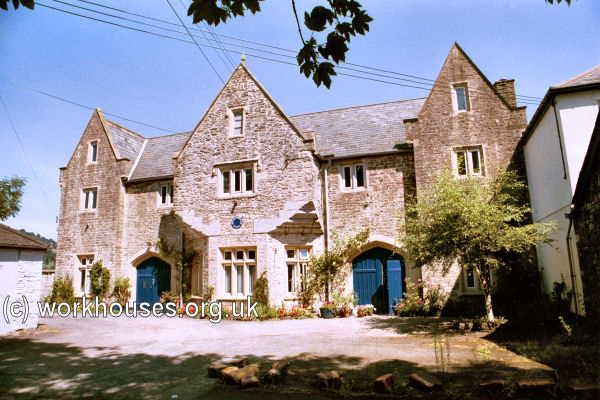
Abergavenny workhouse entrance block from the south-west, 2000.
© Peter Higginbotham.
To its rear were two parallel accommodation blocks connected by a central spine.
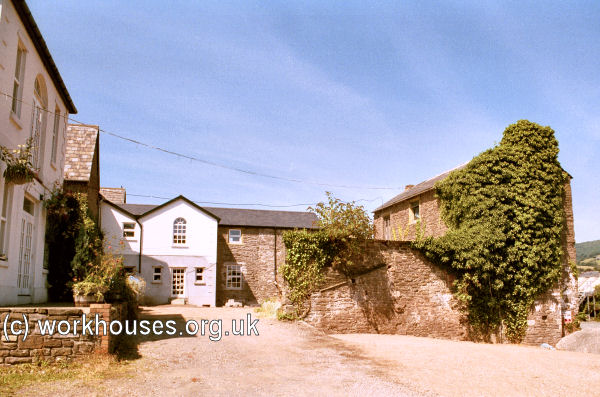
Abergavenny workhouse rear of entrance block from the south-east, 2000.
© Peter Higginbotham.
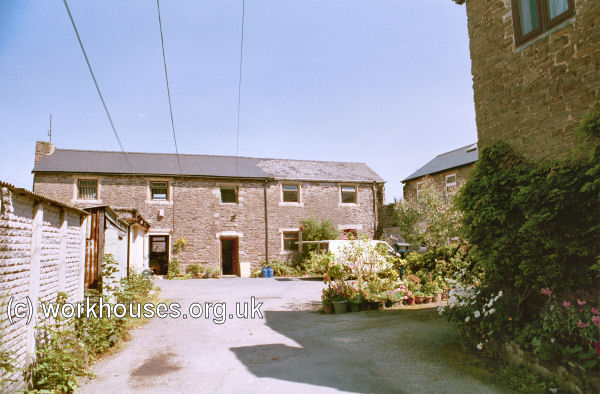
Abergavenny workhouse west yard from the south-west, 2000.
© Peter Higginbotham.

Abergavenny workhouse from the east, 2000.
© Peter Higginbotham.

Abergavenny workhouse inmate staircase, 2000.
© Peter Higginbotham.
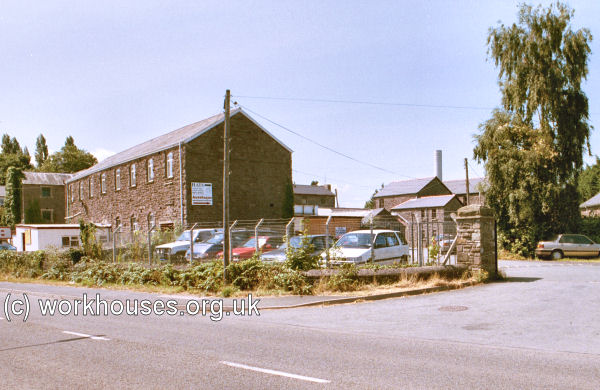
Abergavenny workhouse from the south-east, 2000.
© Peter Higginbotham.
A separate infirmary block was added at the north-east of the workhouse.
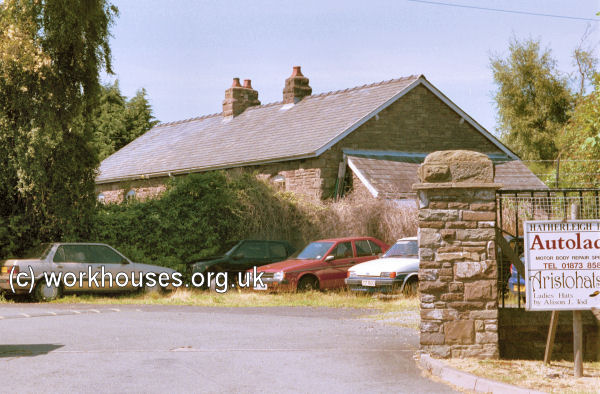
Abergavenny workhouse infirmary block from the south-east, 2000.
© Peter Higginbotham.
Poor Law Board Inspector, Mr. J.T.Graves, visited the workhouse in June 1866. His report noted:
In around 1914, William and Rose (née Hoare) Williams were the Master and Matron of the Abergavenny workhouse. Their grand-daughter Veronica McKenzie has kindly provided a picture of them with the workhouse staff, and the Union's chairman, clerk, and chaplain.
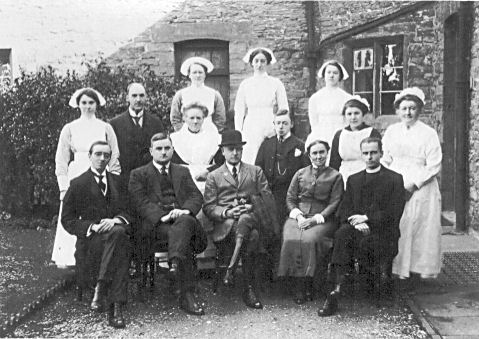
Abergavenny, c.1914.
Courtesy of Veronica McKenzie.
The former workhouse site later became known as Hatherleigh Place. The surviving parts of the building are now (2000) occupied by a variety of small businesses. One of these is a hat-makers — interestingly, hat-making is said to be one of the work activities performed by inmates in the workhouse.
Staff
Inmates
Records
Note: many repositories impose a closure period of up to 100 years for records identifying individuals. Before travelling a long distance, always check that the records you want to consult will be available.
- Gwent Archives, Steelworks Road, Ebbw Vale NP23 6DN. Holdings comprise: Guardians' minute books (1836-1930); Admission/Discharge registers (1843-1914); Creed Registers (1868-1911, incomplete); Register of Deaths (1836-1893); Notices of Death (1924-1928).
Bibliography
- Higginbotham, Peter The Workhouse Encyclopedia (2014, The History Press)
- NEW! Workhouses of Wales and the Welsh Borders. The story of the workhouse across the whole of Wales and the border counties of Cheshire, Gloucestershire, Herefordshire and Shropshire. More...
Links
- None.
Unless otherwise indicated, this page () is copyright Peter Higginbotham. Contents may not be reproduced without permission.


